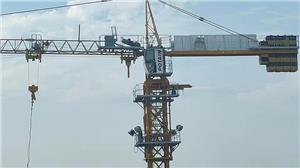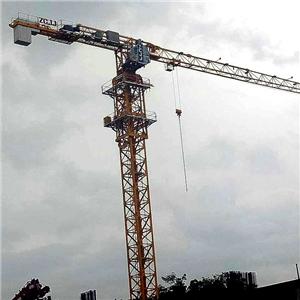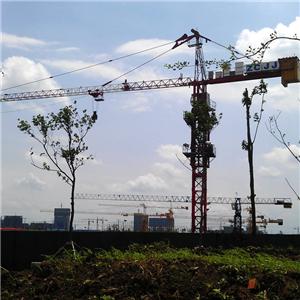Detailed introduction to the structure and stability of a large moving tower crane
The characteristics of the large moving arm tower crane, the main structure of the large moving arm tower crane adopts pin connection and high-strength bolt connection, and the standard section of the tower crane adopts high-strength bolt connection.
The high-strength bolt bears the alternating load and is a very important force connecting part of the tower body.. The FAVCO series of Tower cranes have entered the Chinese mainland for more than 10 years.
Some models have used 2-4 projects. According to the domestic standard "High-strength fasteners for construction machinery and equipment"(JG/T5057), high-strength bolts are reused. Requirements, high-strength bolts, nuts.
After use, it can not be used again, usually more than twice. The removed bolts and nuts must be free from any damage, deformation, sliding teeth, tooth loss, Rust, and large changes in thread roughness. Otherwise, re-use of connections to the stress structure should be prohibited.
Therefore, the reuse of such high-strength bolts must be particularly cautious.
According to the stability calculation principle of the tower boom, when the stable moment generated by the weight of the tower boom and the hook is greater than the post-overturning force moment generated by the wind, the boom is stable.
Vice versa. Take the M440D operating state(empty load) 55m mounting arm length as an example, the wind force takes the working state rated wind pressure 250N/m2, and the critical elevation angle is set to A.
Through analysis and calculation, the elevation angle a = 78 ° in the critical state of the boom. This is a dangerous state for the lifting tower to work at rated wind pressure. If there is an overelevation angle or overwind speed, it is very likely to cause major accidents: the lifting arm leans backward under the action of wind power, and the mechanical limit structure of the lifting arm is destroyed.
The top structure of the tower is deformed by the impact, and the lifting arm breaks and falls.
According to the principle of calculating the stability of the entire machine, the height of the base surface is marked(initial installation) under the non-working state of the large moving arm tower.
If the algebra of the bending moment generated by the wind and the stable moment generated by the weight of the entire machine are smaller than the bending moment of the base surface, The machine is stable.
Conversely, instability. Taking the example of the M440D non-working state 55m mounted arm length and tower height 40m, the wind force is rated at 1100N/m2, and the M440D tower is suspended for fixed mounting base surface with a bending moment of 1120t.m.
The critical elevation angle is set to A. Through analysis and calculation, the elevation angle a = 39 ° in the critical state of the boom. This is a dangerous state for the non-working lifting of the arm tower.
If there is an overelevation angle or overwind speed, it is also prone to major accidents and the entire aircraft is overturned forward.
According to the above calculation results and national relevant standards, it can be calculated that the safety distance of the same elevation M440D tower must be greater than 26.4 meters, and adjusted according to the local typhoon historical wind speed.
Today, the main parameters for the lifting of large domestic boom towers have reached 720t.m. We have reason to believe that as long as foreign products can meet the performance targets, China's tower lifting products will certainly be able to achieve it.
In the large family of construction cranes, the large arm tower will surely continue to dominate.




